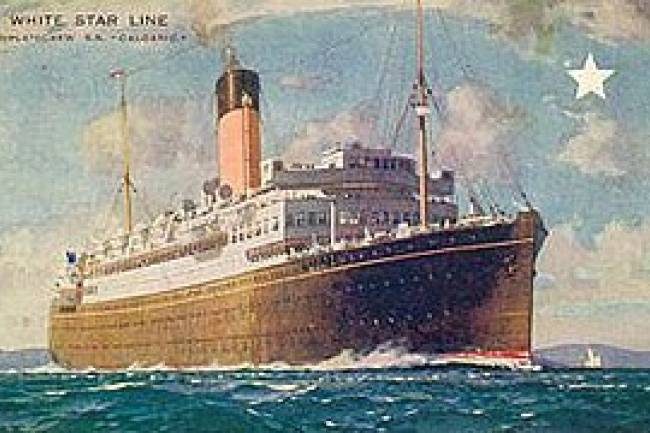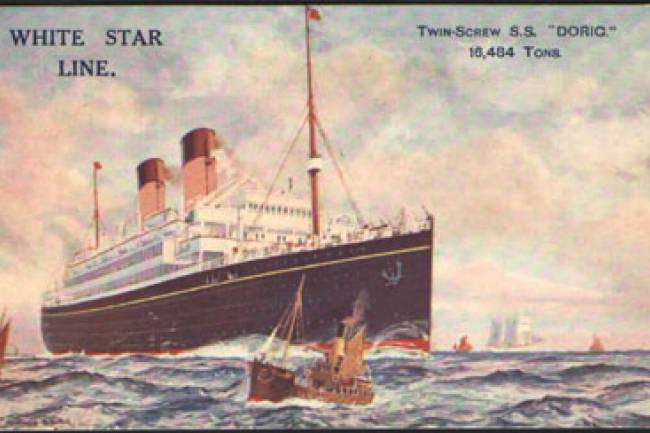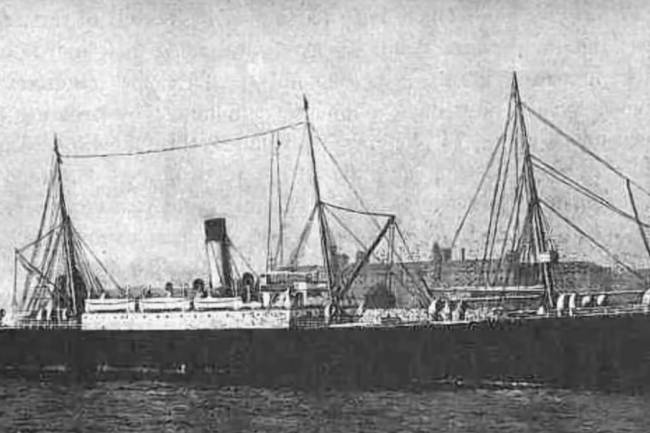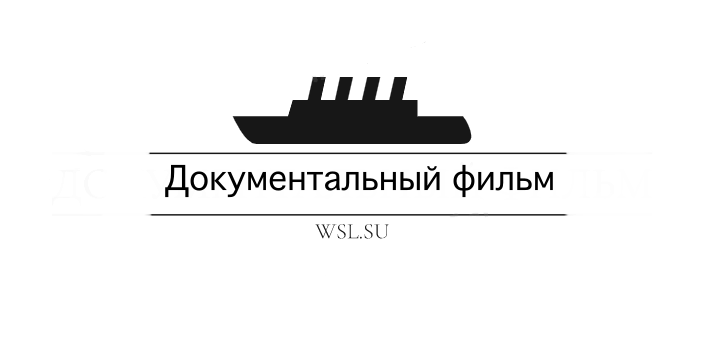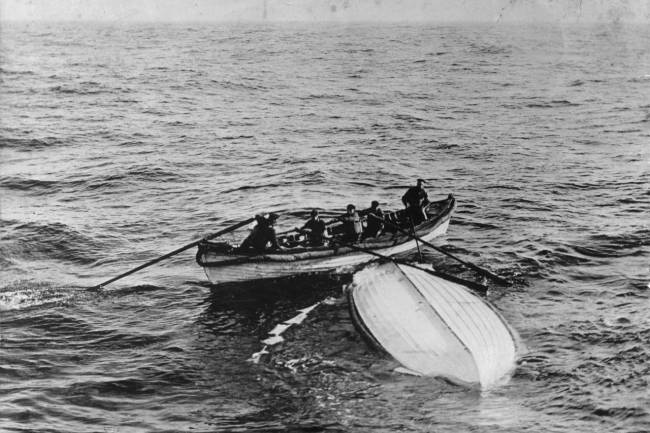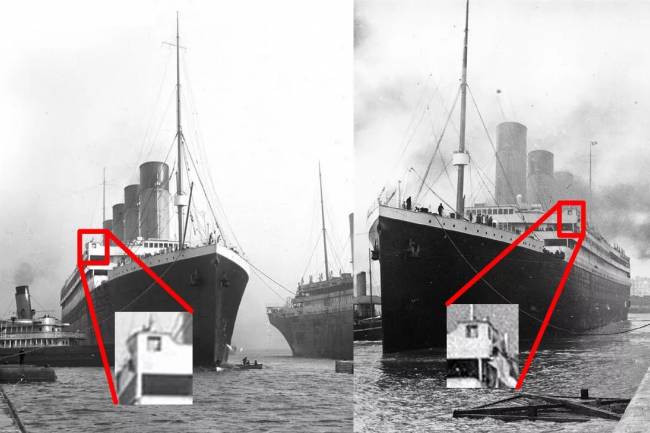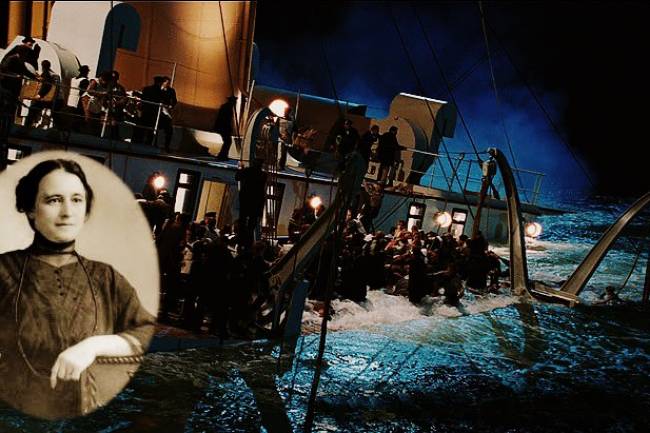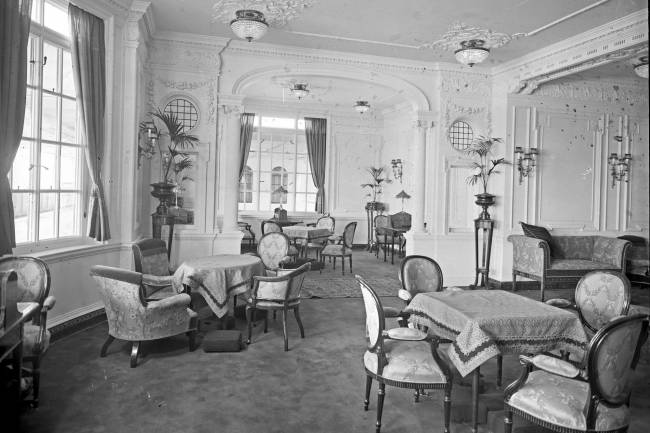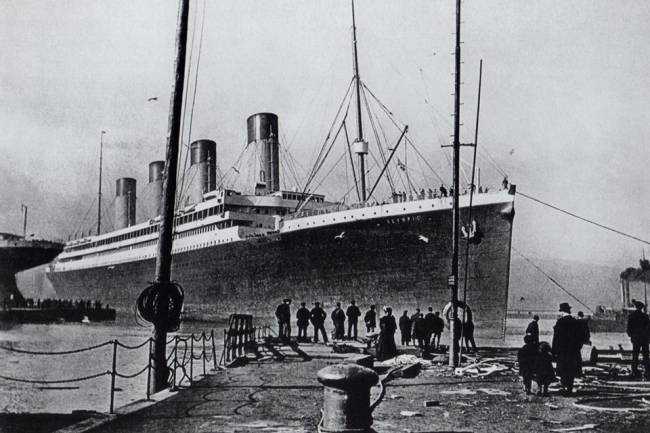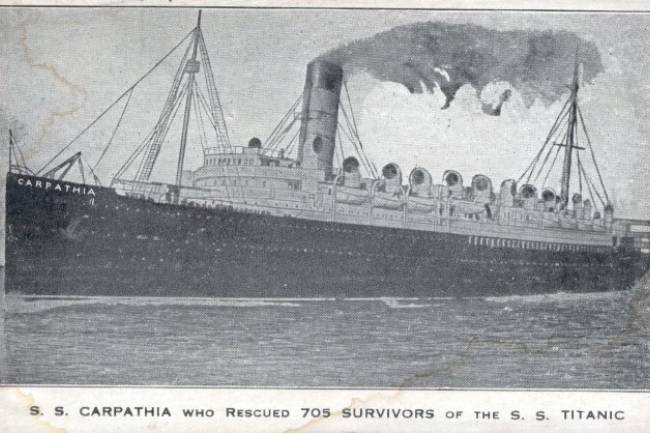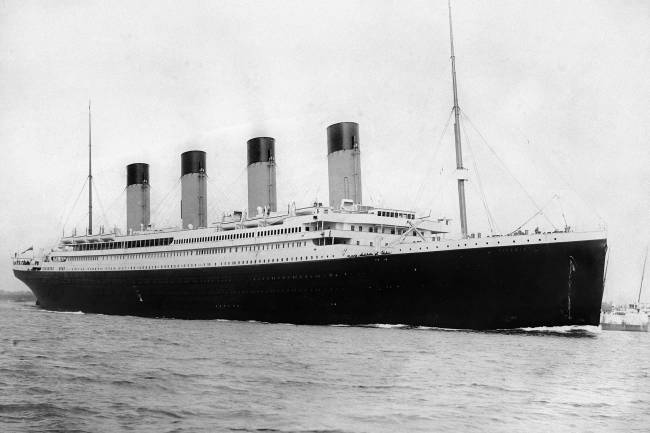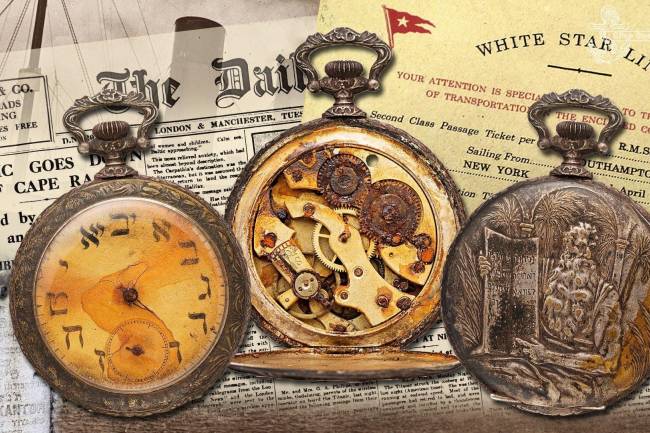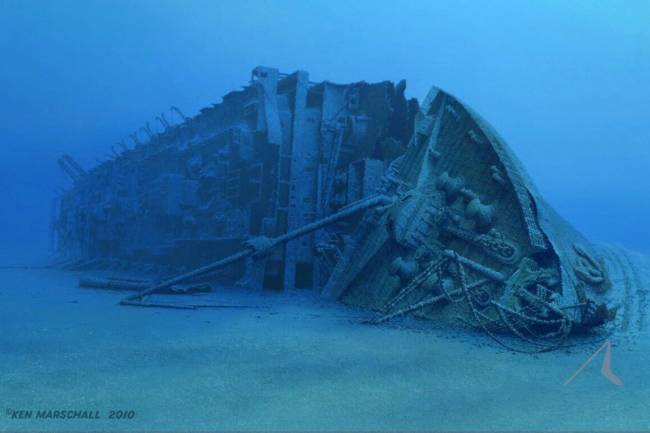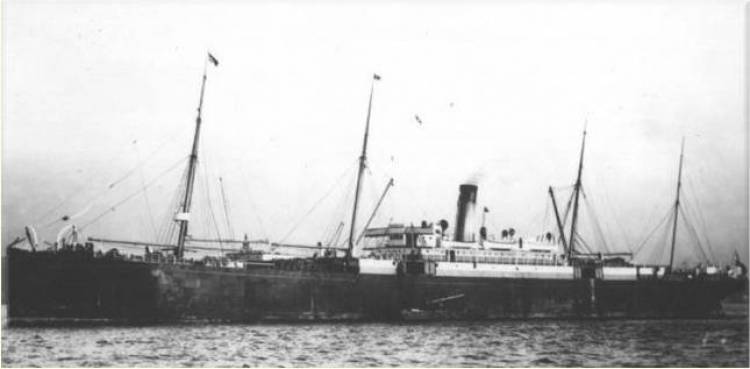
SS Cevic (eng)
Statistics
Gross Tonnage - 8,315 tons
Dimensions - 152.39 x 18.29m (500 x 60ft) Number of funnels - 1
Number of masts - 4
Construction - Steel
Propulsion - Twin screw
Engines - Six-cylindered triple expansion engines Service speed - 13 knots
Builder - Harland & Wolff, Belfast
Launch date - 23 September 1893
Passenger accommodation - None
Details of Career
The Cevic was launched on 23 September 1893 as a livestock carrier and made its maiden voyage from Liverpool to New York on 12 January 1894. Out of New York it loaded the largest cargo to date. This service continued until 1908 when the New York cattle trade ceased. The Cevic then transferred to the Australian route, via the Cape. A route through the Suez Canal was also tried but it was found that the ship's deep draught caused it to ground in the canal.
On 1 December 1914 it was converted into a dummy battleship and named the HMS Queen Mary. After work had been completed it left Loch Ewe on 11 February 1915 but hit a rock and had to return for repairs. It left Belfast again on 10 April but grounded on Raithlin Island in the fog. On 13 April it finally left on its first patrol. On 25 April it was patrolling off New York after the German raider Kronprinz Wilhelm had applied for internment there the same day. The ship's disguise was never penetrated. By September, however, it was de-commissioned and restored by Harland & Wolff.
In 1916 it was chartered by the Royal Fleet Auxiliary, converted into an oil tanker and renamed Bayol. In 1917 it was transferred to the Shipping Controller, renamed Bayleaf and placed under the management of Lane & McAndrews. It continued as a fleet oiler servicing the shore depots of the Navy. On 9 June 1920 it was sold to the Anglo-Saxon Petroleum Co. and renamed Pyrula. It then became a depot ship at New York until it was transferred to Curacoa in 1925. On July 1933 it was sold for scrapping to Henrico Haupt of Genoa.
